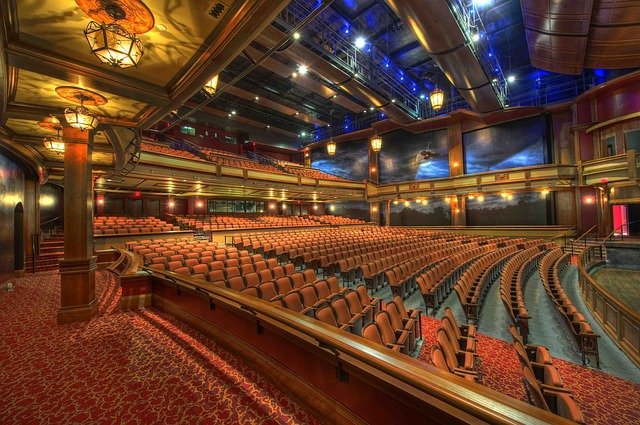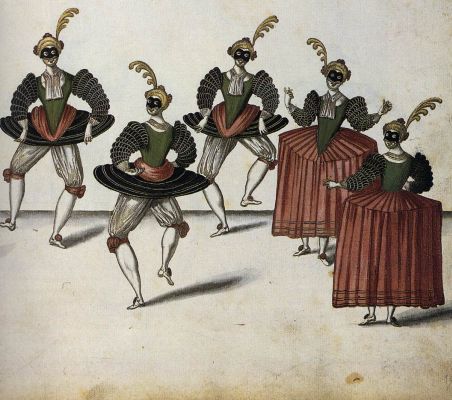Renaissance Theater – Concept, Idealization and Features
Contents
What is the Renaissance Theater?
The Renaissance Theater of the XVI Century is characterized by Humanism, starting from the religious, it trusts more in its potentials to create technology, not leaving its destiny only in the hands of God. Similarly, the works of this theater, idealization of nature, the return to the classic, taking at first principles of the Greek and Roman.
According to Garcilaso de la Vega, this theater presents two characteristics of the Renaissance man: Knowledge and Fortitude, with which he not only handles weapons well, but also possesses a culture, showing himself skilled with both the sword and the pen. Consequently, the debate arises as to whether the active life or the contemplative life is better, action, related to war or reflection, related to the cultivation of letters.
The theater, therefore, was favored by the change of thought, since they began to compose dramatic works focused on man, more centered on the characters and their customs than on morality.
In addition, in this period there was a relevant fact in the ideas, by the discovery of the printing press by Gütenberg, which promoted the publication of literary works and their reading, as well as the emergence of social classes (more educated), who were interested in good literature, they were also patrons wanting to invest in new talents. Some of his works were: El carpe díem: seize the moment, locus amoenus, Beatus Ille, among others.
How did the Renaissance Theater develop?
The Renaissance theater, like the other literary genres of the time, is a theater in the beginning, of imitation of the classical Greco-Latin authors, mainly Horacio de la Vega, in his literary. Therefore, Bartolomé Torres Naharro, in writing his propaladia or dramatic precepts, relies on the literature of the time. Thus, the humanistic tendency of the theater culminates with the purely Renaissance character in works such as “La venganza de Agamenón” by Fernán Pérez de Oliva.
What are the types of Renaissance Theater?
Religious Theater
In the 16th century, the theater of the previous masters continued, since they were still developing their work. Therefore, pastoral scenes about the birth or passion of Christ, the adoration of the Magi, among others, are imitated and the Sayagües dialect is cultivated. Thus, the adaptation of early Renaissance playwrights to humanistic theater was mostly in translations and adaptations of comedies of Greco-Latin authors, made for the reading of a minority audience. Therefore, it is a cultured theater and its social impact was very small.
Popular or Profane Theater
It takes as models the Latin comedy of Plautus and Terence, as well as the Italian theater of that time (Boccaccio). These plays were performed outdoors (corrals) in theaters installed in communities of houses, already at the end of the 16th century, since there were no places to represent theatrical works, so they were performed by itinerant actors, giving rise to theatrical companies, with comedy, drama and tragedy as genres.
The Palatial Theater
Humanistic and pastoral themes were performed in the palaces.
What is the legacy of the Renaissance Theater?
The Greek theater will have an important influence on the consolidation of the Renaissance theater and later on the Western theater. Therefore, the presence of Greek theater was well marked in every stage of the theatrical tradition from the Renaissance to the twentieth century. In the same way, Renaissance theater will have its repercussion in the thematic world of opera.
In this sense, opera is actually a theatrical variant, since it is a sung play, sometimes accompanied by dance, and is accompanied by very specific scenery, depending on the theme.
Before 1500, Italian amateur actors were performing classical comedies on stages with no decoration except for a row of curtain booths. But then, changes in scenery occurred with the incorporation of complex painted landscapes into the production in Florence. So, by 1650, Italy had developed staging practices that would dominate European theater for years to come.
Which were the main representatives of the Renaissance Theater?
In the Renaissance theater, we have knowledge of Spanish authors and plays, classified in generations. Thus, the first generation is formed by authors linked to the medieval tradition. Among them are Juan del Encina, author of the dramatic pieces called églogas (Égloga de Plácida and Victoriano), the Portuguese Gil Vicente, Lucas Fernández and Bartolomé Torres Naharro.
Then to the second generation belongs Lope de Rueda and the authors of the Valencian group that are integrated in a professionalized theatrical environment. The third generation is represented by Juan de la Cueva, who deals more with historical and national themes such as the Tragedy of the Seven Infantes de Lara, The Death of King Don Sancho and The Sack of Rome.
Similarly, Juan de Enzima, who was a playwright of medieval and Renaissance theater, stands out in the fifteen eclogues that are preserved of him, we can see the transition from the medieval in the conception of pastoral representations to a new Renaissance perspective. Likewise, Gil Vicente is generally considered the father of Portuguese theater, or even of Iberian theater, since he also wrote in Spanish and shared the authorship of Spanish theater with Juan del Encina.
Similarly, Lope de Rueda, was a Spanish poet and playwright belonging to the so-called Golden Age of Spanish art. His works were written in the style of Italian comedy, adapted to the Spanish theater from Italian dramaturgy, consolidating the Italianizing influence in the Castilian lyric. Similarly, Juan de la Cueva, with his dramatic works, adapted the classical tradition to the Spanish theater and was a precursor of Lope de Vega’s national theater, writing dramas on classical, historical and national themes.


